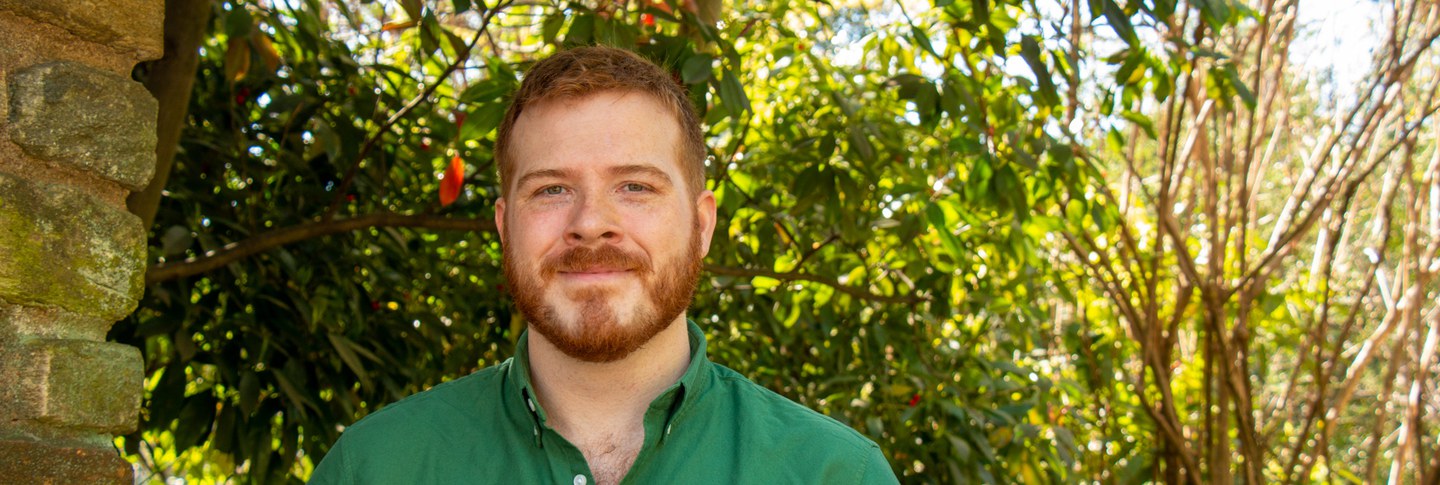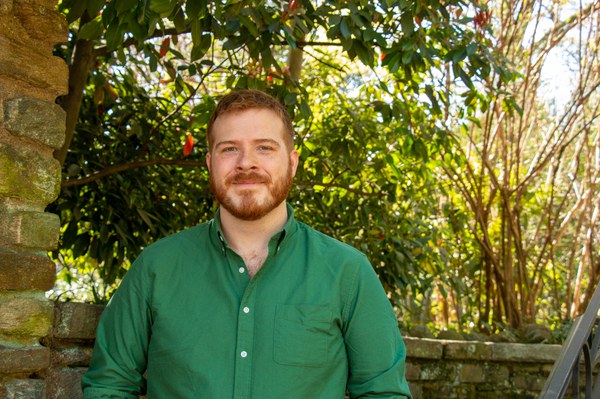Jacob Welch, PhD candidate at Yale University, was a junior fellow in Pre-Columbian Studies in spring 2022. His research report, “Ancient Maya Labor Relations: Building a Palace at Ucanha, Yucatan, Mexico,” presented the implications of labor relations from excavations of a palace at Ucanha in Yucatan, Mexico.
Q&A with Jacob Welch
What is Ucanha and its significance?
Ucanha is part of a larger region defined by an ancient road that connects the sites of Uci, Kancab, Ucanha, and Cansahcab. Ucanha is the second largest site, and it has its beginnings in the middle preclassic period, or about 700 to 300 BCE. It had a very slow start and peaked population-wise in the late preclassic (300 BCE to 250 CE). I particularly focused on a platform the size of a football field, two meters off the ground surface, which we thought could be a palace or an elite residence of the wealthiest people at Ucanha.
My excavations of the Ucanha palace began in 2014, during which I found an early building with a motif representing woven fibers or textiles. The motif is significant because there are ethnohistoric documents that talk about a council house called popol nah. Pop in Maya means “mat,” and people have proposed that mat structures like the one at Ucanha were council houses. If this were a council house, it would have enormous implications for ancient Maya politics because the presence of council doesn’t really follow the narrative that societies became more “democratic” as they became more complex.
I returned to Ucanha in 2017, excavated the structure again, and found several other buildings underneath the palace, one having a colossal head sculpture in its façade. I also excavated different portions of the palace to understand how it was constructed.
What does the archaeological evidence suggest about the labor history at Ucanha?
The labor involved in the construction of the earlier building potentially required greater divisions of labor, meaning there were different types of specialists, and that work was allocated further to a greater number of people. Someone might have prepared stucco, others quarrying stones, etc. The stucco floor that covers the whole building was applied all at once, so the building had to be constructed in a single phase, implying a significant and specialized workforce. Later construction phases occur in small portions, suggesting less division of labor. This progression counters the stereotypical narrative of social complexity; that is, as a society becomes more complex, the divisions of labor and the degree of skill and specialization increase. This building appears to be the opposite: in the later periods, I see a less complex system that required fewer divisions of labor, so the construction phases happened incrementally.
How does this change our understanding of the ancient Maya?
The progression of labor suggested by the construction phases turns around what we think of the classic period as being the pinnacle of Maya civilization. In general, there is more art from the classic period depicting kings, queens, captives, and the like than there is from the preclassic period, so people typically think rulers in the classic period wielded the most power. But if labor investment is one of the key indicators of power—as it was in the colonial period—then these excavations suggest preclassic rulers were able to mobilize a larger labor force. This then tells a different story of collapse. It shows that at least at Ucanha, society reached its peak far earlier and then slowly declined, which is counter to the narrative of quick collapse that has been previously said about the Maya area.
Also, often when archaeologists study labor, they study it from just one side—either through the possessions of elite people to infer how much power they had over a subject area or through the laborers and project how much power leaders had based on that. Because this is a palace, it’s a locale where both types of evidence meet, so you can study both the material wealth of the leaders and the contributions of laborers.
Conversations with Ann Peters have been helpful for understanding the social aspects of the labor history, and Christina Halperin has helped me consider the biases of this form of labor calculations called architectural energetics, which calculates the quantity of labor to make an architectural form. The Justin Kerr Maya archive of Maya vase rollout images and the Nicholas Hellmuth Archive Maya Ceramic archive have been helpful for interpreting the iconography of the sculpture.
May Wang is postgraduate writing and reporting fellow. Photo by Emily Orr, 2021–2022 humanities fellow.

